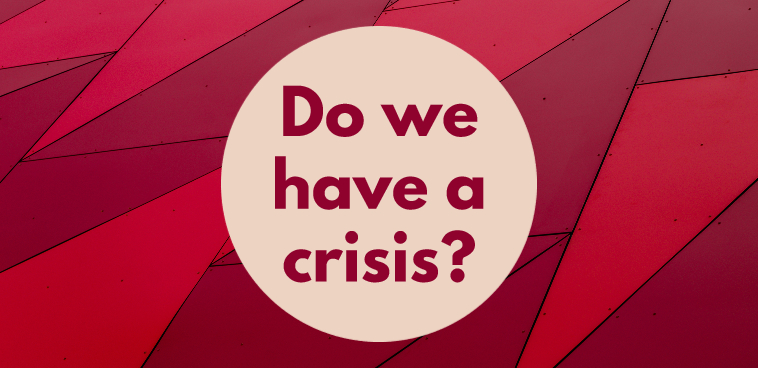Sign up for SmartBrief on Leadership today for free.
In 1990, North Face founder Doug Tompkins had a predicament, though others called it a crisis.
He’d just sold his shares in his second company and his second enormous business success, Esprit, and had begun to turn his attention to the environmental crisis. Tompkins saw the rapid erosion of natural lands worldwide and the seismic shifts beginning to show cracks that would become the climate crisis we know today.
Tompkins took action, giving large sums to environmental groups already busy fighting the environmental crisis using well-worn techniques. Quickly, however, Tompkins could see that the known ways weren’t working. The main reason, he concluded, was because those he was supporting were approaching the challenge as a crisis. Tompkins recognized the situation instead as a predicament.
The difference is crucial, and it’s a distinction every leader must come to comprehend to thrive in the often-outsized challenges of uncertain times. According to Tompkins, “Crises are things that usually rally people to find solutions. Predicaments are a little more difficult.”
When people approach a challenge through the lens of a crisis, they tend to see the task narrowly – in the extreme, as a singular problem for which a singular and complete solution can be found. For that to actually be true, there must be a lot of certainty and stability in the nature of the problem.
Further difficulty arises when there’s an expectation that the solution born of this simplified view will also have staying power. Many crises are, in truth, predicaments. A predicament is more complex and ambiguous, and the process of finding a turnkey solution far more uncertain.
To address a predicament, a series of solutions must be pursued, and be seen as part of a larger mosaic and linking together over time. That’s why a predicament is much more about changing the overall way you think and do things than about finding one way to resolve one thing.
3 signals of a predicament versus a crisis
How do you know when you’re actually in a predicament versus a crisis? Turns out there are a number of familiar signals for answering the question that you might be missing.
One signal, so obvious as to be overlooked, is when you’re in a challenging situation where there appears to be no known solution to fixing things. This situation presents an obvious chance to do a rethink. Our default is most often the opposite — to instead focus on finding an existing approach and, however unconsciously, try to force it to fit.
We do this because were busy, and because it’s easy. But we also do it because we aren’t in the habit of pausing to ask, “Crisis or predicament?” The feeling of “No known solution” should instead function as a cue to explore completely outside the box.
Another often-overlooked signal is when the issue is a recurring problem. That’s what Tompkins encountered. Why is it, he found himself asking, that all the existing good ideas, good intentions and herculean efforts of environmental protection perpetually fall short?
It was because those efforts, Tompkins realized, were so crisis-driven that the people behind them, smart and dedicated as they were, just kept swinging the same hammer rather than changing tools. Every crisis looked like another nail.
A third signal occurs when a challenge involves crossing borders to get to a solution — borders within the organization, between organizations, in work methods or ways of problem-solving. Inherently, such border crossings demand a fundamental revision in how you think, not just what you’ll do in the crisis moment.
While countless signals exist, these three give strong clues as to how to begin to look for and distinguish predicaments from crises.
What to learn from Tompkins
In a way, the story behind Tompkins’ advice should end right there, lest we risk thinking that what he did – that is to say, his specific actions – should become our formula to repeat. Tompkins’ epiphany caused him to consciously move away from supporting old ways of protecting the environment, at least in the sense of treating those ways as best or turnkey in and of themselves.
He instead, over the course of two decades, developed an entirely new approach to protecting wild lands, an approach that has since changed how environmental protection is pursued. But it’s the catalyst thought he began with that’s of greatest value: Is this a crisis, or is it really a predicament?
Predicaments don’t get resolved so much as they get absorbed into new ways of thinking and doing. These ways of thinking and doing are the kind that tend to spread in enormously impactful ways across whole organizations, entire cultures or, in many cases, beyond single organizations and cultures.
If you stop and think about it, you’ll find you’re thinking in a whole new way.
Larry Robertson is an innovation advisor who works, writes and guides at the nexus of creativity, leadership and entrepreneurship. Robertson was named a Fulbright Scholar in 2021. He’s also the author of two award-winning books: “The Language of Man. Learning to Speak Creativity” and “A Deliberate Pause: Entrepreneurship and Its Moment in Human Progress.” As founder of Lighthouse Consulting, he has for over 25 years guided entrepreneurial ventures and their leaders through growth to lasting success. His third book, “Rebel Leadership: How to Thrive in Uncertain Times,” was released June 1, 2021.
If you liked this article, sign up for SmartBrief’s free email newsletters on leadership and business transformation, among SmartBrief’s more than 250 industry-focused newsletters.
